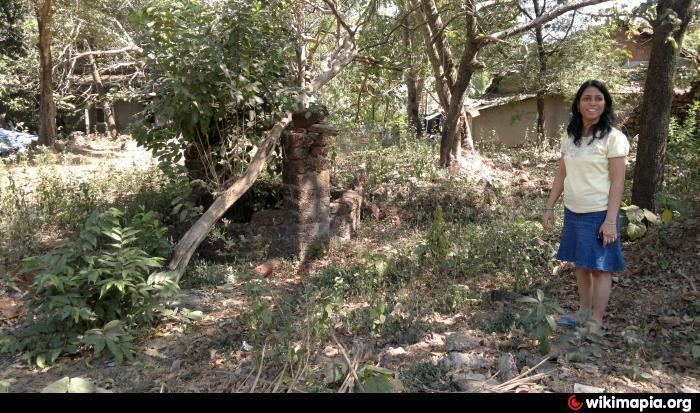Time zone IST (UTC+5:30) Elevation 8 m Area code 08343 | State Goa Taluka Ilhas Postcode 403107 Local time Monday 8:16 PM | |
 | ||
Weather 27°C, Wind NW at 6 km/h, 63% Humidity | ||
Cumbarjua is an island town on the banks of the Mandovi River in Goa. It is situated to the east of Goa's capital Panjim at a distance of 20 kilometres.
Contents
Map of Cumbarjua, Goa 403107
Location
A 20-km eastward drive from Panjim through Ribandar, Old Goa, Corlim, Banastarim, Tivrem and Marcel brings you into Cumbarjua via its bridged entrance. But the 13-km journey through the cool confines of Gandaulim and ferry crossing is what throws up a kind of vintage charm. Merely a stone’s throw away from each other, the Gandaulim-Cumbarjua distance across the crocodile-inhabited canal is perhaps the shortest navigated route in riverine Goa. Crocodile sightings are a common feature along the Cumbarjua canal, but an absolute rarity in the rest of the state.
History
Cumbarjua’s history dates back to the early 15th century. On the west was Gandaulim which marked the fortified border of the Portuguese-ruled Goa island (Tiswadi), and on the east was Marcel, which demarcated the end of the Bijapur’s Adil Shah empire. Sandwiched between the two warring powers, the island, which was considered as no man’s land was often used as a launching pad for attacks on each other by the two aggressors. Later, attempts were also made to capture it and it continued to bear the brunt and scars of these battles. On November 25, 1510, the Cumbarjua island was annexed by the Portuguese from the Muslim king Adil Shah.
After Cumbarjua was captured, the Portuguese began to develop it and the then Governor Diogo Lopes de Sequeira in 1545 handed it over to a Catholic priest Fr. George Dias Cabral, for three generations, with the condition that one-tenth of the produce were to be given to the government in the name of God annually.
In the 19th century, Cumbarjua was divided into four pieces and sold. Out of that sale, one piece was bought by the rich Shenvi Kenkre family. Another portion of the less populated was bought by one Peres. Later circumstances forced them to sell it. Shenvi Kenkre’s land was auctioned by the civil court for non-payment of a loan and thus it was forfeited to the Shree Mangueshi Devasthan, Priol. Peres’ property was sold to the Naique family. After the sale and change of ownership, the Mangueshi temple committee imposed heavy taxes on the residents of the island. This made people, who could not afford to pay the taxes, move to Gaudalim. The temple used to collect taxes from all houses, both Hindu as well as Catholic, but if one would pay a 20-year tax in advance it was considered as life-time tax.
Besides the Kenkres and the Peres’, Pratap Rao Sardessai, Shenvi Dhume, Bhandari, Prabhu Lawande, were the Hindu landlords and de Sa's, Alvare's and de Sousa's were the prominent Catholic landlords.
Demographics
In an area admeasuring 2,401,550 sq. metres, living in perfect harmony is a population of approximately 7,144 Cumbarjuemkars; out of which 85 per cent are Hindus and the rest Catholics; all peacefully settled in Talapwada, Surchem Bhat (which got its name from the whispering palms near the river), Golwada, Takwada, Khadap Wada, Rambhuvan Wada, Mollo wada, Gavant and Thapan wada. According to historian Vinayak Narayan Shenvi Dhume, in 1770, Cumbarjua was made up of 486 houses (400 Hindus + 86 Catholics). The Hindu families comprised Goud Saraswat caste of Smarth and Vaishnau, Daivajnas, blacksmiths, carpenters, Kunbis, Gaudas, potters, washermen, fishermen and cobblers. Of the 86 Catholic families, ten were those of washermen and five of potters. Muslims were a skeletal few.
